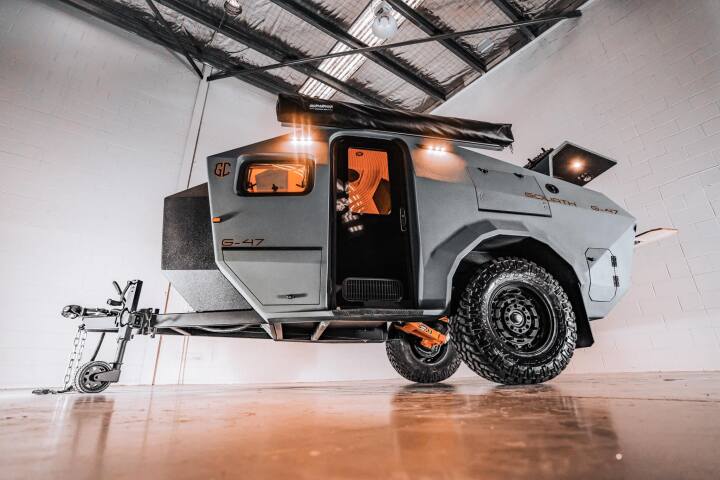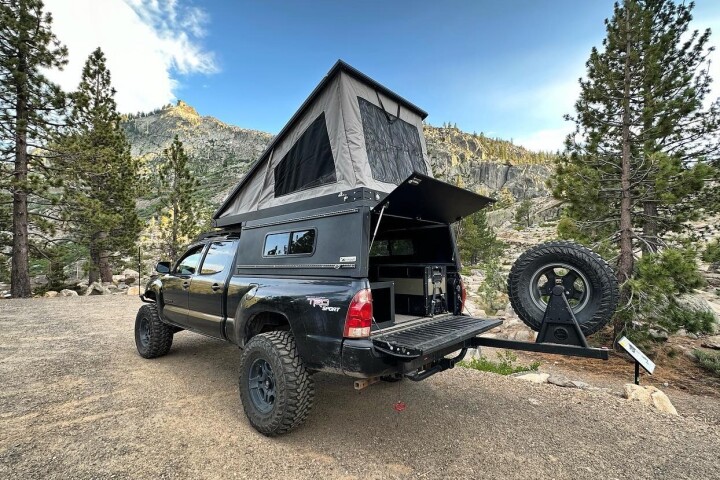To the continued annoyance of his father Pierce, twelve-year old Nash Hoover was forever leaving his bedroom light on when he wasn't in the house. Determined to teach him the real value of wasted energy, Nash's journalist father popped the young wastrel on an exercise bike that displayed the amount of energy being produced and told him to pedal away until he managed to produce enough watts to power a standard incandescent light bulb. Then the pair had the notion of spreading the now fully-learned lesson by traveling across America in a vehicle that uses no more energy than a light bulb left on each day.
Pierce Hoover had considered charging his (now) 13-year old son for the amount of electricity he wasted by leaving lights on when no-one was at home, but with the bills only adding up to cents rather than dollars, such an action was hardly likely to leave a lasting impression on the youngster. The message was driven home with the aid of an exercise bike which, while only requiring a moderate pace to achieve the 100-watt light bulb's energy requirements, needed considerably more effort from Nash to match the power needs of his video gaming system.
The discussion didn't end there, though. "Nash and I wanted to demonstrate how much we could do with the energy we'd save by turning off one light," says Pierce Hoover. "Together we set the goal of crossing the country on the power of one bulb per day."

The journalist already had some build experience from converting an old golf cart into an off-roader named the Swamp Crawler a few years back, and so set about designing and building a lightweight vehicle capable of taking the two of them on a 4,500-mile (7,242 km) journey from Yorktown, Virginia to Portland, Oregon.
Hoover and son came up with a four-wheeled, side-by-side two-seater, human-electric hybrid vehicle with a fast-turning, stand-alone EcoSpeed brushless electric motor connected to the vehicle's existing chain drives, and a roll bar structure to the rear of the vehicle to afford some crash protection for the occupants.
While hub motors could have been used for electric assist, Hoover needed a configuration that could be easily maintained on the road using readily available parts and which had less of a power requirement on hill climbs (and there'll be lots of those along the chosen route - from the Appalachians to the Ozarks to the Rockies). The multi-sprocket drive system uses a chain rather than belt drive for similar reasons.
The EcoSpeed solution also benefits from a speed controller with Velociraptor microprocessor that rations the power based on factors like the condition of the battery, the load on the motor, and working temperatures.
The custom-built four-wheeler has a top speed of 25 mph (40 kph) - so that it can be legally classed as a bicycle by limiting its power output and speed - and is said to achieve the equivalent of over 1,000 miles to the gallon (.24 L/1000 km). The vehicle gets its power from a combination of onboard 1,400 watt-hour battery pack stored in the trunk at the rear and kinetic energy from pedaling. It's available energy supply is limited to 2,400 watt-hours per day, which is the equivalent of a 100W light bulb left on all day.
The intrepid father and son team intend to travel a good 60 miles (97 km) every day, while stopping off at various towns and cities along the way to spread their energy conservation message. By comparison, Hoover worked out that an electric golf cart would get about 10 to 12 miles (16 to 19 km) per day on the same energy ration. To offer some protection from the (hopefully) blazing summer sun, a soft top cover runs from the full-width windshield at the front to the roll bar at the back.

A travelogue of the adventure is being posted by Popular Science Magazine, which is also sponsoring the trip together with GE. Regular updates are also being sent to the Eco Tour's Twitter page.
After posing for the press in New York on May 31, the Hoovers and their Hundred Watt Hybrid set off for the first full day of the Eco Tour from Yorktown, VA the next day. At the time of writing, they are about to hit the hills outside Charlottesville, Virginia.
We wish them luck.








